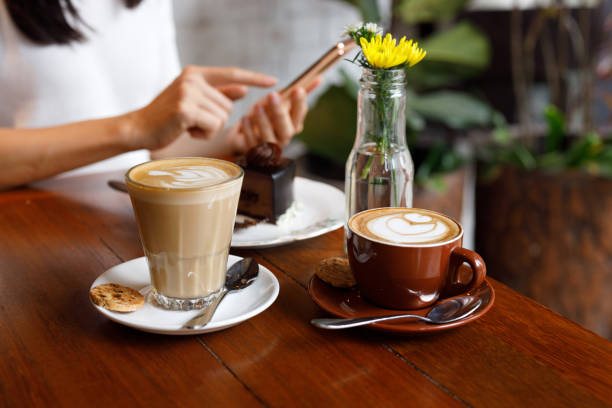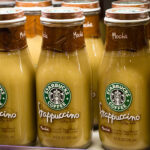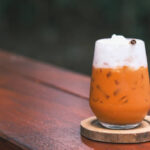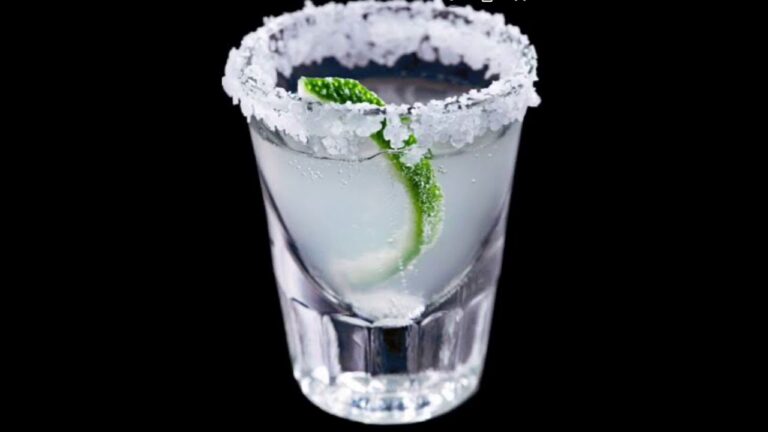Does A Chai Latte Have Caffeine? Learn About Chai Latte
Embarking on the exploration of one of the most beloved beverages in the world, the chai latte, many enthusiasts find themselves asking a pivotal question: Does a chai latte have caffeine? This inquiry is not only relevant for those mindful of their caffeine intake but also for aficionados seeking to deepen their understanding of what makes this aromatic concoction a staple in coffee shops and kitchens globally.
In this comprehensive article, we dive into the heart of the chai latte, unraveling its components, origins, and the role caffeine plays in its makeup. Chai, a word that simply means “tea” in many parts of the world, has transcended its humble beginnings to become a symbol of warmth, spice, and everything nice. However, its fusion with the creamy texture of a latte adds layers of complexity and intrigue to its profile.
By combining expertise in both culinary and nutritional science, we offer a detailed analysis that not only answers the titular question but also enriches your understanding of the chai latte’s cultural significance and nutritional considerations. Whether you’re a caffeine-sensitive individual, a curious foodie, or a seasoned tea lover, this article promises insights that will enhance your appreciation for the chai latte and perhaps even influence your future beverage choices.
Join us as we embark on this flavorful journey, unveiling the secrets behind the caffeine content in a chai latte, and discover why this beverage continues to captivate hearts and taste buds around the globe. Your cup of chai latte is not just a drink; it’s a story steeped in history, culture, and science, waiting to be told.
Contents
- 1 An Introduction to Chai Latte Culture
- 2 Chai’s Origin Story: A Spicy Tradition
- 3 The Chai Latte – A Modern Interpretation
- 4 Demystifying Caffeine Content in Chai Lattes
- 5 Health Benefits and Precautions
- 6 Chai’s Role in Culture and Community
- 7 Exploring Global Variations of Chai
- 8 Crafting Creative and Seasonal Chai Lattes
- 9 Tips for Perfecting Your Chai Latte
- 10 A Final Reflection on Chai’s Significance
An Introduction to Chai Latte Culture

Chai lattes provide a comforting ritual that many have incorporated into their daily routines. Sipping a perfectly spiced chai latte can be a sensory treat, with aromas and flavors that provide a brief moment of tranquility during a busy day. Beyond their sensory appeal, chai lattes have become ingrained in many cultures. In the United States, they are associated with autumnal coziness, often enjoyed while wrapped in a blanket or soft sweater. Their sweetness provides a pick-me-up when energy starts flagging in the afternoon. For many, a chai latte means connecting with friends at a café, probing deep conversations over steamy mugs.
While chai lattes may feel mainstream now, they originate from a long history and tradition. This article will explore chai’s roots, how the chai latte came to be, and most importantly – answer whether this popular drink contains caffeine. From traditional preparation to modern adaptations, we’ll cover all things chai and look at how to enjoy chai lattes responsibly.
Chai’s Origin Story: A Spicy Tradition
To understand Chai latte, we must first look to chai itself. So what exactly is chai?
Chai refers to a spiced tea beverage that originated in India thousands of years ago. The term “chai” itself simply means “tea” in Hindi and other related languages. Chai likely originated as an Ayurvedic beverage, used for its potential medicinal benefits. Traditional chai ingredients include:
- Black tea: The base of chai is black tea, which contains caffeine.
- Spices: Chai is characterized by a blend of aromatic spices, most commonly cardamom, cinnamon, cloves, black pepper, and ginger.
- Milk: Milk is traditionally added to chai, typically simmered together with the tea and spices.
- Sweetener: Sugar or honey is used to sweeten chai.
The exact origins of this spicy tea are murky, but its use can be traced back at least 5,000 years in the Indian subcontinent. Its significance continued to grow through the colonial era when Britain established tea plantations in India in the 1800s. Through export and cultural diffusion, chai spread around the world over the following centuries.
The Chai Latte – A Modern Interpretation
While traditional chai remains popular in India and other parts of South Asia, a new variation emerged more recently – the chai latte. Chai lattes as we know them today became popular in the 1990s as chai began to have a major presence in specialty cafés.
So how exactly does a chai latte differ from traditional chai? There are a few key distinctions:
- More focus on convenience – chai lattes are often made with a concentrate rather than slow-simmering tea and spices.
- Uses steamed milk rather than simmering chai and milk together.
- Trendier presentation – often topped with foamed milk or creative garnishes.
- More variety – cafés offer diverse flavors like vanilla, pumpkin spice, chocolate chai, etc.
But at its core, a chai latte uses the same ingredients – black tea, spices, milk, and sweetener. It adapts traditional chai to a convenient format familiar to latte drinkers around the world.
Demystifying Caffeine Content in Chai Lattes
Now that we’ve covered the essence of chai and its evolution into the chai latte, let’s get to the heart of this article. The question we must ask – does chai latte contain caffeine?
The short answer is – yes, chai lattes do contain caffeine. This is because they are brewed from black tea, which naturally contains caffeine. However, the specific amount of caffeine can vary quite a bit depending on factors like:
- Brewing method: Chai concentrate or loose leaf tea? Simmered or steeped? All impact caffeine levels.
- Tea amount: More tea equals more caffeine.
- Tea type: Assam black tea has more caffeine than Darjeeling black tea. Herbal “chai” contains no caffeine.
- Milk and sweetener: Adding more milk or sweetener dilutes the caffeine concentration.
- Preparation: Homemade or store-bought have varying caffeine levels.
To understand these factors, let’s analyze and compare the caffeine content in different types of chai lattes.
Caffeine in Homemade Chai Lattes
For homemade masala chai lattes, prepared with loose leaf black tea, cinnamon, cardamom and ginger:
- 8 oz serving contains roughly 25-35mg caffeine
This estimate is based on typical home-brewed chai using about 1.5 grams of Assam black tea. The caffeine content can increase or decrease a bit depending on the variables above like tea amount and steeping time.
Caffeine in Store-Bought Chai Lattes
For a store-bought chai latte made from a chai tea concentrate:
- 12 oz serving contains 60-75mg caffeine
This average is based on testing popular retail chai concentrates like Oregon Chai, Tazo and Teavana. The higher caffeine content compared to homemade chai lattes relates to the higher proportion of tea concentrate used.
Comparing with Coffee and Other Beverages
To put chai latte caffeine levels into context, let’s see how they compare to coffee and other caffeinated drink options:
- Homemade chai latte (8oz): 25-35mg
- Store-bought chai latte (12oz): 60-75mg
- Green tea (8oz): 15-45mg
- Black tea (8oz): 25-55mg
- Coffee (8oz): 70-100mg
- Espresso (1oz): 47-64mg
- Coca-cola (12oz): 34mg
As shown, chai lattes generally contain less caffeine than drip coffee or espresso drinks. But they pack more of a caffeine punch compared to other teas. Factors like preparation method and portion size also impact the caffeine dose.
Decaf and Herbal Chai – Caffeine-Free Options
For those looking to avoid or limit caffeine, there are several options:
- Decaf chai – Choose a decaffeinated black tea as the base.
- Rooibos chai – Use rooibos tea, which is naturally caffeine-free.
- Herbal chai – Craft a caffeine-free herbal chai using spices with no actual tea.
Health Benefits and Precautions
While small amounts of caffeine can provide an energizing lift, it’s smart to be mindful of your caffeine intake. Consuming too much can lead to jitters, insomnia, and other unwanted effects.
Understanding chai ingredients and their health impacts allows you to make informed choices. Many chai spices like cinnamon, cardamom, ginger and cloves have antioxidant and anti-inflammatory properties. But going overboard on sugar negates the benefits. As always, moderation is key.
Here are some tips for balancing caffeine from chai lattes:
- Enjoy chai lattes earlier in the day to prevent sleep disruption.
- If caffeine sensitivity is a concern, opt for a small chai latte or herbal caffeine-free variation.
- Stay hydrated by pairing chai lattes with water.
- Avoid excessive sugar by choosing unsweetened chai concentrates and adding your own sweetener to taste.
Chai’s Role in Culture and Community
Beyond its sensory pleasures and potentially positive health impacts, chai plays another important role for many – bringing people together and building community. In India, sharing chai is deeply woven into social fabric. Chai symbolizes warmth, welcoming, and connection. Even the very act of preparing chai brings people together through a shared ritual.
These community-building elements translate into chai latte culture around the world as well. Chai lattes provide a comforting shared experience for connecting with friends, family, and even strangers. The aroma of chai wafting through a café immediately sparks nostalgia for many. And for-here mugs encourage casual conversation and reflection. Through this shared love of chai, people forge new bonds.
Exploring Global Variations of Chai

One of the joys of chai is experiencing all its diverse interpretations around the globe. Each culture has put their unique stamp on chai lattes:
India – The motherland of chai remains the authority. Street chai with boiled milk and sugar is the standard. Masala chai reigns, with regional variations in spice blends.
Britain – Indian chai’s influence endures from colonial days. Chai served with biscuits is a nostalgic treat. UK cafés offer creative spins like chai-infused craft beers.
Thailand – Thai tea blends Indian spices with local ingredients like star anise and tamarind. Served chilled and sweetened with condensed milk.
Japan – Matcha chai lattes combine Japanese matcha green tea with chai spices for an antioxidant boost.
United States – Pumpkin spice and other seasonal flavors prove chai’s ability to reinvent itself. Customizability and coffeehouse flair define US chai trends.
Part of chai’s appeal is experiencing how it transforms across borders while retaining its comforting essence. There’s a global chai community to explore.
Crafting Creative and Seasonal Chai Lattes
Another joy of chai is seeing the creative spins put on this classic drink:
Iced Chai Latte – Cool off with chilled chai, perfect for summer days. Cold brew the chai for maximum flavor.
Dirty Chai – Get an extra caffeine kick by combining chai with a shot of espresso.
Chai-der – For autumn, spike chai with apple cider and seasonal spices like nutmeg, vanilla, and allspice.
Mexican Chai – Use Latin spices like chili powder, allspice, vanilla and brown sugar.
London Fog – Earl Grey tea, steamed milk, and vanilla make a lavender-infused chai.
Chai & Cookies – Dunk holiday sugar cookies into peppermint-spiced chai.
The options for creative takes on chai lattes are endless. Part of the fun is experimenting with unique flavor combinations while staying true to chai’s soul.
Tips for Perfecting Your Chai Latte
Want to become your own barista and make chai lattes at home? Here are some tips:
- Use whole spices – Pre-ground spices won’t provide the same burst of flavor and aroma. Grinding them fresh makes a difference.
- Mind the proportions – Getting the spice-to-tea ratio right is key. Let the spices complement the tea instead of overpowering it.
- Simmer the tea – Allowing the tea to simmer together with the milk and spices infuses more flavor.
- Sweeten thoughtfully – Add sugar, honey or maple syrup, but don’t overdo the sweetness. The spices should still shine.
- Foam the milk – For an authentic chai latte, use a milk frother to create a luxurious foam topping.
- Garnish with flair – Make it visually appealing with spices like cinnamon, nutmeg, or cardamom sprinkled on top.
With these tips, you’ll be crafting picture-perfect chai lattes in your own kitchen. Experiment and find your ideal blend of flavors and textures.
Read on to learn more: how much caffeine in chocolate
A Final Reflection on Chai’s Significance
In conclusion, through chai’s evolution from ancient Ayurvedic origins to its modern chai latte interpretations, we can understand why it remains so significant worldwide. It provides sensory pleasure and nostalgic comfort. Its caffeine offers energizing lift balanced by healthful spices. Chai lattes facilitate human connection. And every culture that embraces chai makes it their own through local ingenuity.
So does chai latte have caffeine? Yes, but caffeine is only one aspect of chai’s appeal. When enjoying your next chai latte, savor its aroma, spice blend, sweetness, and overall soul-warming ritual. This remarkable beverage continues to permeate cultures and bring people together. Chai’s story is still being written as new global perspectives shape it into the future.
https://bamboowokmanvel.com/food-drink/beverages/
Harmony Saunders is the CEO and founder of Bamboo Wok, a family-owned and operated Chinese restaurant that has been serving the Manvel, Rosharon, and Alvin communities for more than nine years. Our delicious dishes are made from scratch with the best ingredients, vegetables are fresh cut daily in our kitchen, and poultry is delivered every two days.
So whether you’re craving Chinese food for the family or need catering for your next event, please give us a try! We know you won’t be disappointed with our fresh, authentic Asian fare.



















